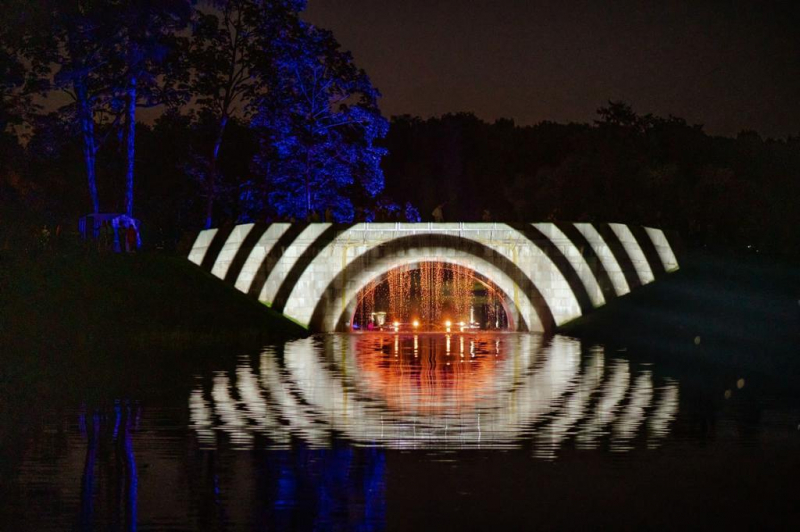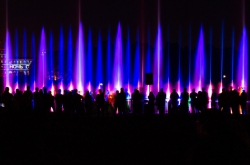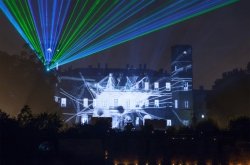Fireworks, performances, and a light show
Light Nights in Gatchina is a major Russian multimedia event in lighting design. Gatchina Palace and Estate Museum welcomes thousands of attendees each year who enjoy fireworks, performances, plays, art objects, and a light show. The key feature of the festival is its routes that allow you to not simply observe static compositions but walk through the historical park, form your own path, and interact with art objects.
For the past two years, the festival was canceled due to the pandemic, but in August 2022 it returned to Gatchina and presented several dozen works by modern artists, designers, multimedia specialists, architects, and engineers. A total of 30 installations and video projections were created specially for the event and introduced to the historical park in Gatchina, adding to and reimagining its grandeur.
Among the art objects were a 30-meter-high lighthouse, helping visitors to find their path, a bridge that helps cross borders between people, and the Sun that could hear the visitors who dared to pick up the phone. On the surface of the Lake Beloye, the visitors observed a projection play with ballet dancers of the Mikhailovsky Theater and got to witness a comet getting closer to the park.
Light and information
The Creative Lighting Department of ITMO University was among the festival’s partners. The students of its Master’s program Lighting Design under the supervision of experienced lecturers participated in the contest of installations, video art, and video mapping. Natalya Bystryantseva, the department’s head, an expert, and the author of over 80 urbanism and lighting design projects, and her team implemented a unique solution called the Flow. Among the team members were Valeria Molodovskaya, a graduate of the Lighting Design program and a professional lighting designer, as well as Dmitry Denisyuk, the technical director of the project, and Alena Cheremisova from HI-REAL Productions.
The installation was placed on the Karpin bridge between the Karpin pond and Lake Beloye of the Gatchina Park. The bridge was destroyed during World War II and recreated in the 1980s.
“We decided to do something that hasn’t been done in St. Petersburg before and created a lighting solution on water. We wanted to discuss what it means for a person to become a part of the digital system and how information flows and life flows relate to each other. We spend nine hours on our phones daily and technologies help us work with data, but they also make us weaker because we don’t need to memorize and reflect on information. At the same time, we feel alive when we’re in nature, by the water flow that helps us live and breathe fully,” says Natalya Bystryantseva.
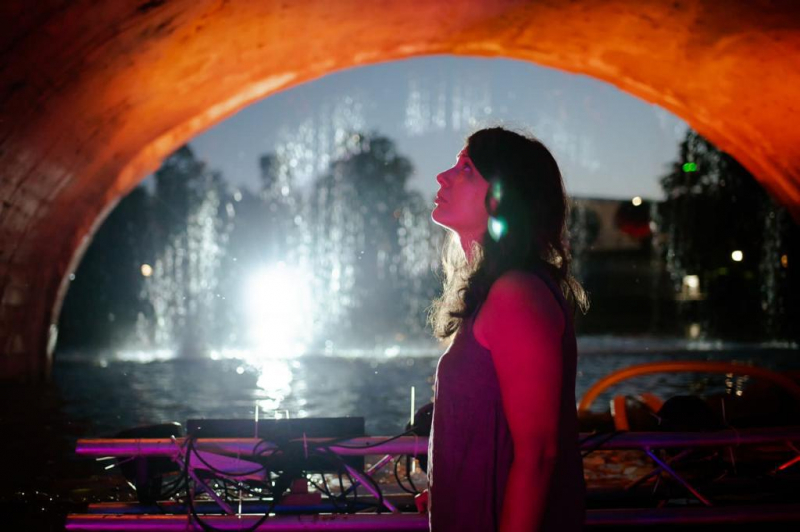
Natalya Bystryavtseva. Credit: Creative Lighting Department, photo by Alexandra Zheltukhina.
The Flow installation included three parts: four minutes of multimedia content, a display, and background lighting that helped create dynamic movement using fog and waterfall effects. The team had to solve lots of hard tasks: for example, how to create a water flow without harming the fish living in the pond and how to form several compositions that mixed the art object with fog, water, and reflections.
There are over 250 bridges in St. Petersburg, but according to Natalya Bystryantseva, they lack unique lighting solutions that would take into consideration their design and surroundings. Bridges are complex objects and there are reasons to be careful when implementing design solutions on them, but there’s also the lack of interest towards experiments in lighting design of such sights.
“Most lighting festivals in St. Petersburg are about creating the wow effect instead of unraveling the uniqueness of the location. At the same time, bridges are powerful constructions that can greatly increase the number of pedestrians in the city. We’re very thankful to the festival’s administration for their trust and the opportunity to implement installations such as ours. We hope the Flow will become a precedent that will help develop lighting solutions in St. Petersburg as part of other events,” says Natalya Bystryantseva.
Culture as a non-verbal dialog
The highlight of the festival was the international contest of lighting installations, video art, and video mapping that was held in St. Petersburg for the fourth time. Among the presented projects were works by ITMO students, just like in past years, when students of the Lighting Design program became prize winners, finalists, and winners of the contest.
This time, it involved several stages and over 20 of them made it to the final stage, including the Inside Out project by Valentina Aun, a graduate of the Lighting Design program. As of now, it leads the audience award chart.
“I loved how the festival and the work on the objects was organized. This was a great experience that helped me learn new techniques of working with light. ITMO’s program Lighting Design taught me how to come up with a concept and implement it, while the festival’s staff helped install my work. That’s why it’s an extremely valuable experience that will come in handy in the future. I also learned how other objects were implemented. All this opens new perspectives and brings new ideas to be applied in upcoming projects,” says Valentina Aun.
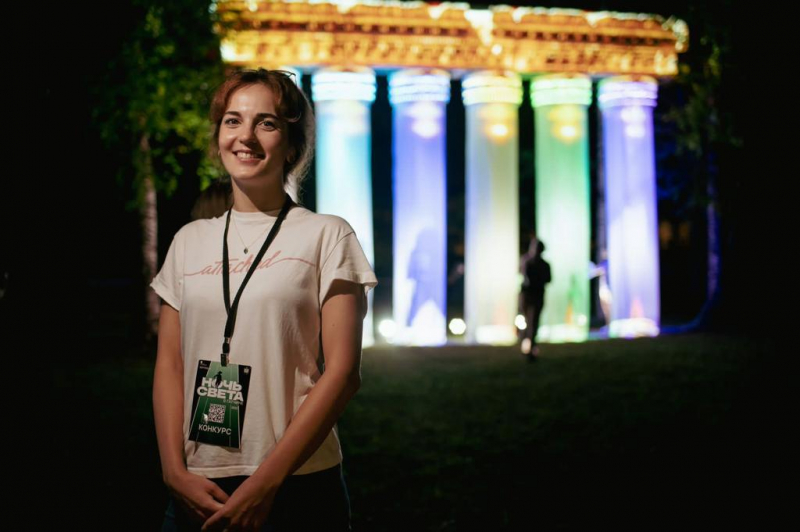
Valentina Aun. Credit: Creative Lighting Department, photo by Alexandra Zheltukhina.
The installation is implemented using tape lighting, video mapping, multimedia animation, and projectors. Inside Out imitates pillars of one of the ancient civilization centers – Baalbek, Lebanon. This work makes visitors turn to another form of communication – gestures and visuals instead of words. Such a peculiar conversation through dancing, lights, and special effects is understandable to all, regardless of their national and linguistic background. According to the author, such an approach helps unite people and provide non-verbal communication.
“The dialog is always crucial to understanding. In prehistoric times, people could express their thoughts, needs, and feelings using drawings, dancing, sounds, and gestures. Their bodies helped them communicate. Later, around the 9th century BC, Phoenicians created the alphabet that became a necessity for global trade. Through our installation, we would like to show that the dialog is possible not only through words. We can also communicate through culture and understand each other,” says Valentina Aun.
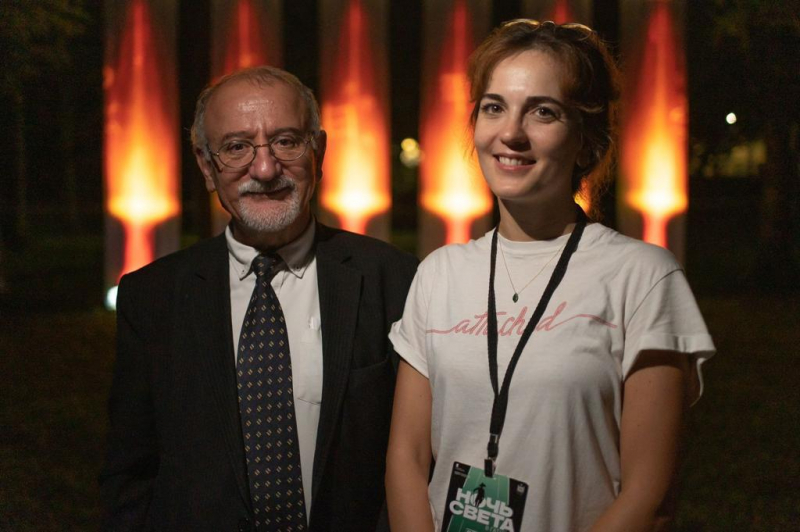
Sheaito Mussallam and Valentina Aun. Credit: Creative Lighting Department, photo by Alexandra Zheltukhina.
“This year’s topic of the festival is Dialog, especially the dialog between different cultures. Today, such communication is as crucial as ever. It paves the way for understanding and harmony in different fields. In our case, this dialog is presented through light – a power that makes everything, from plants to humans, alive. The light in our culture and our souls can be achieved through communication and interaction. International festivals help us create a dialog between cultures and peoples,” says Sheaito Mussallam, Chairman of the Board of the Russian-Arab Cultural Center in St. Petersburg.
The jury will announce the winners in late September. As of now, you can vote for your favorite works on the festival’s website. The audience award will be granted to a single project.
